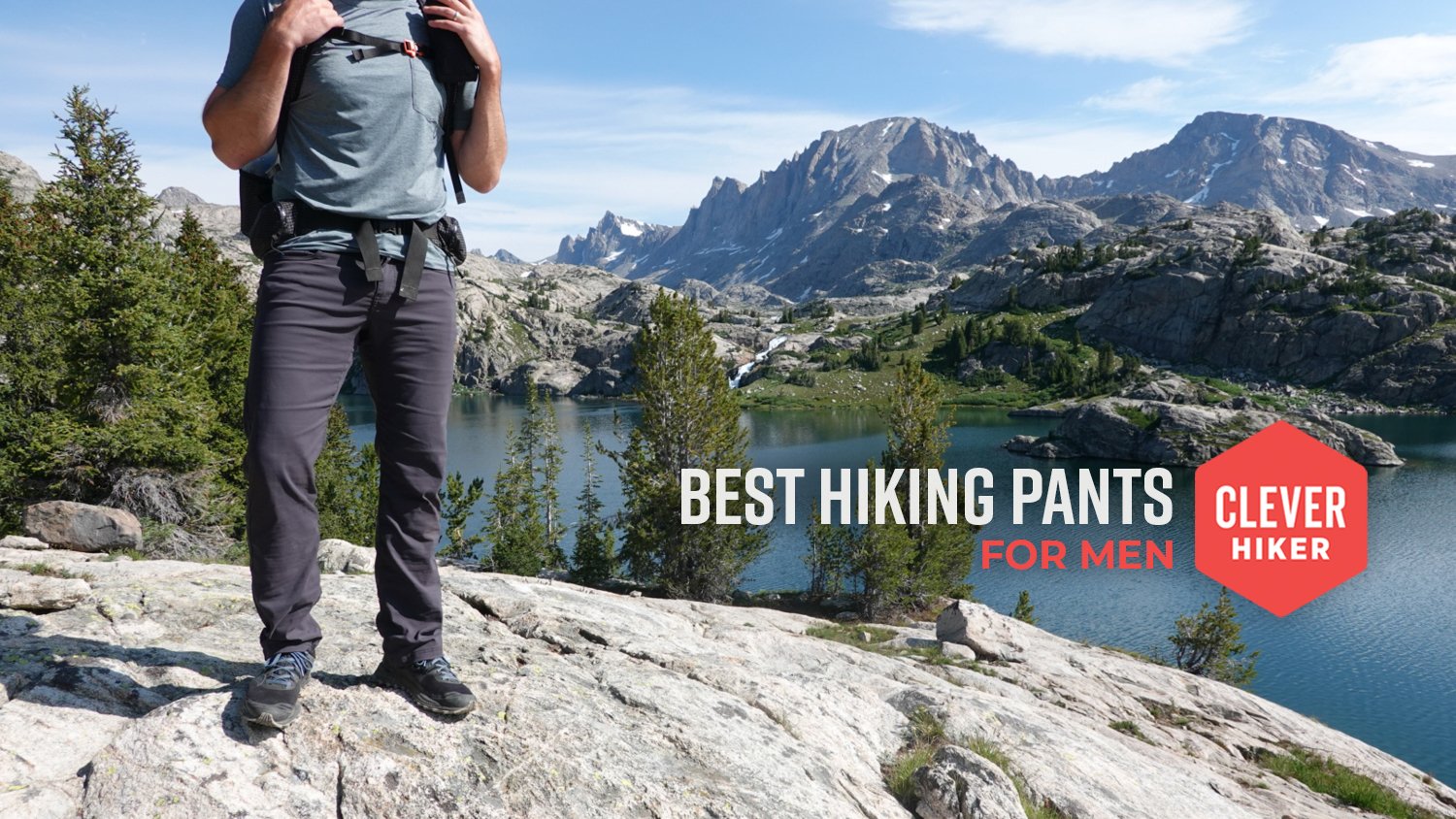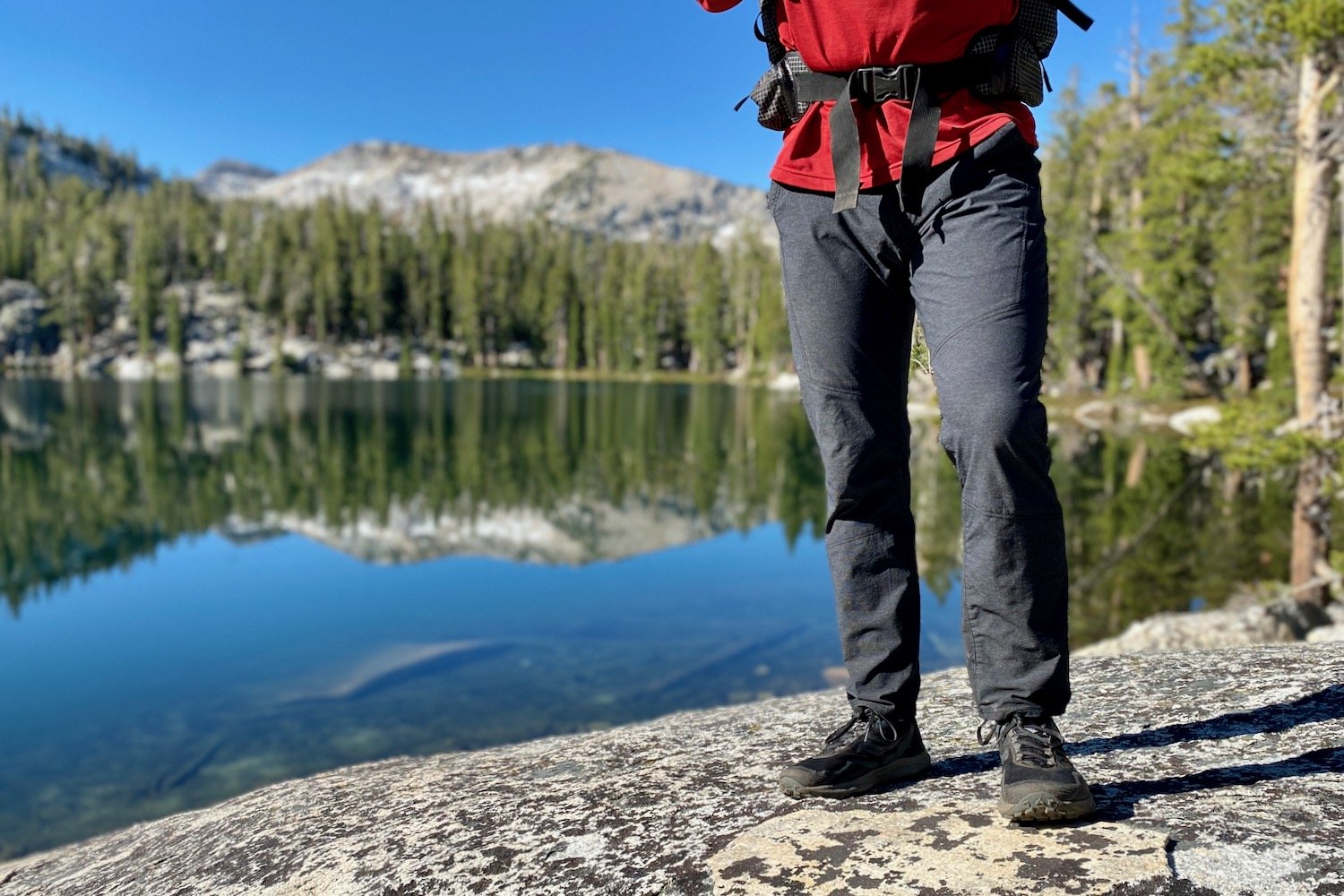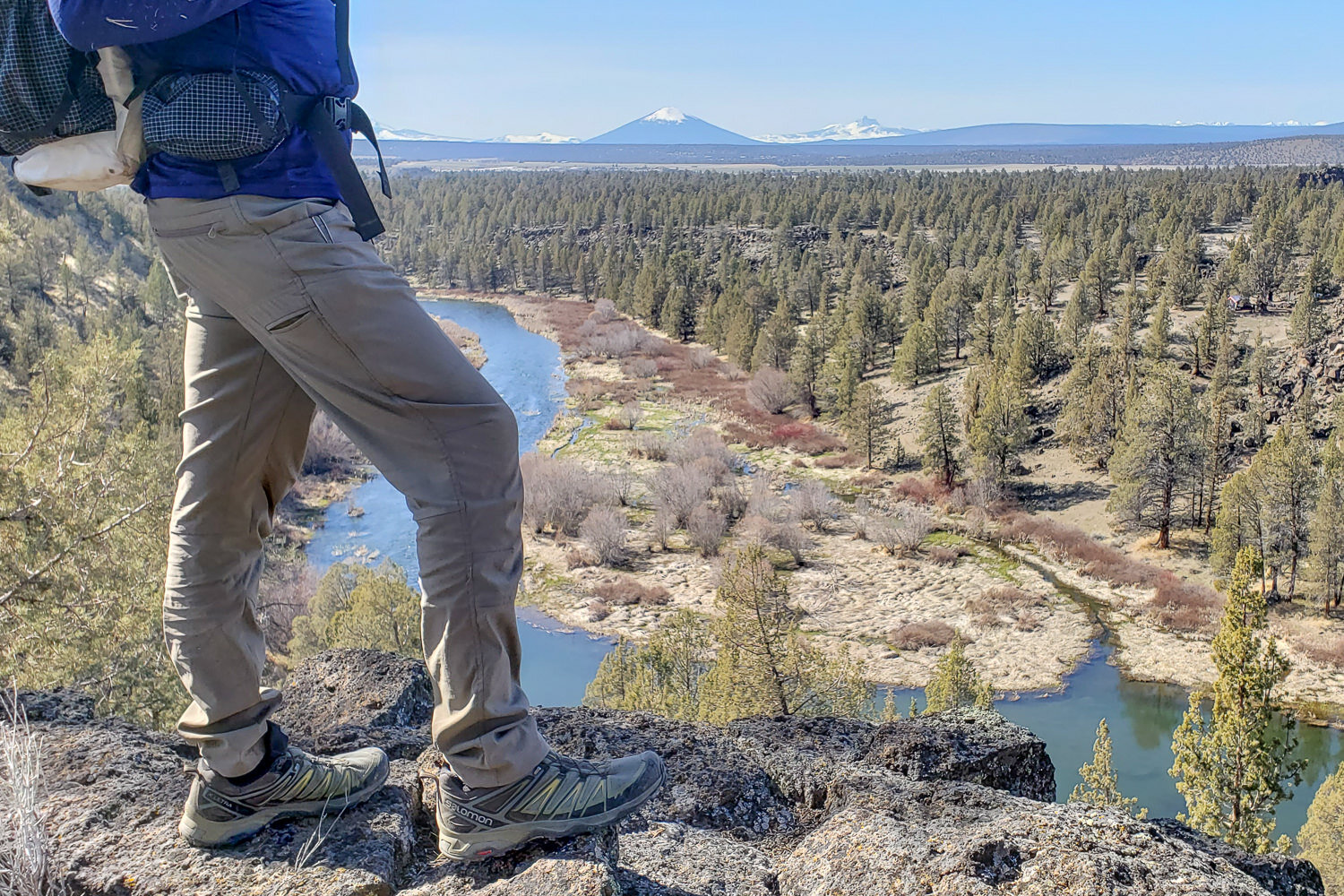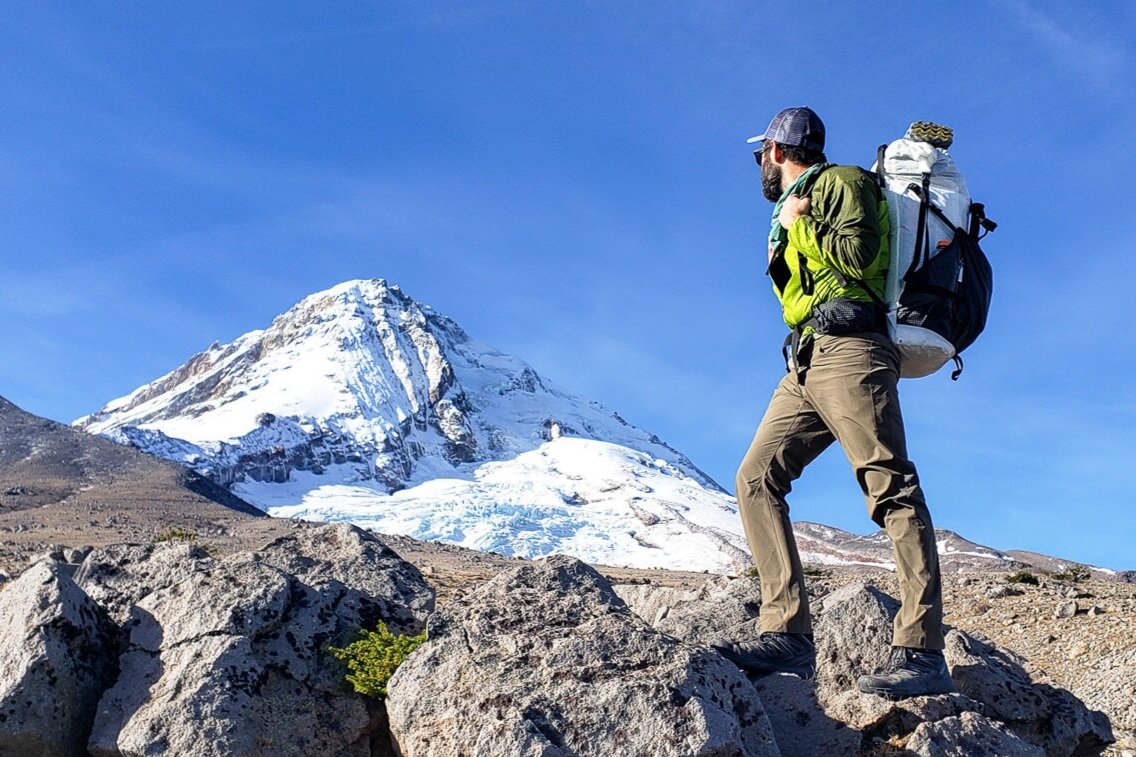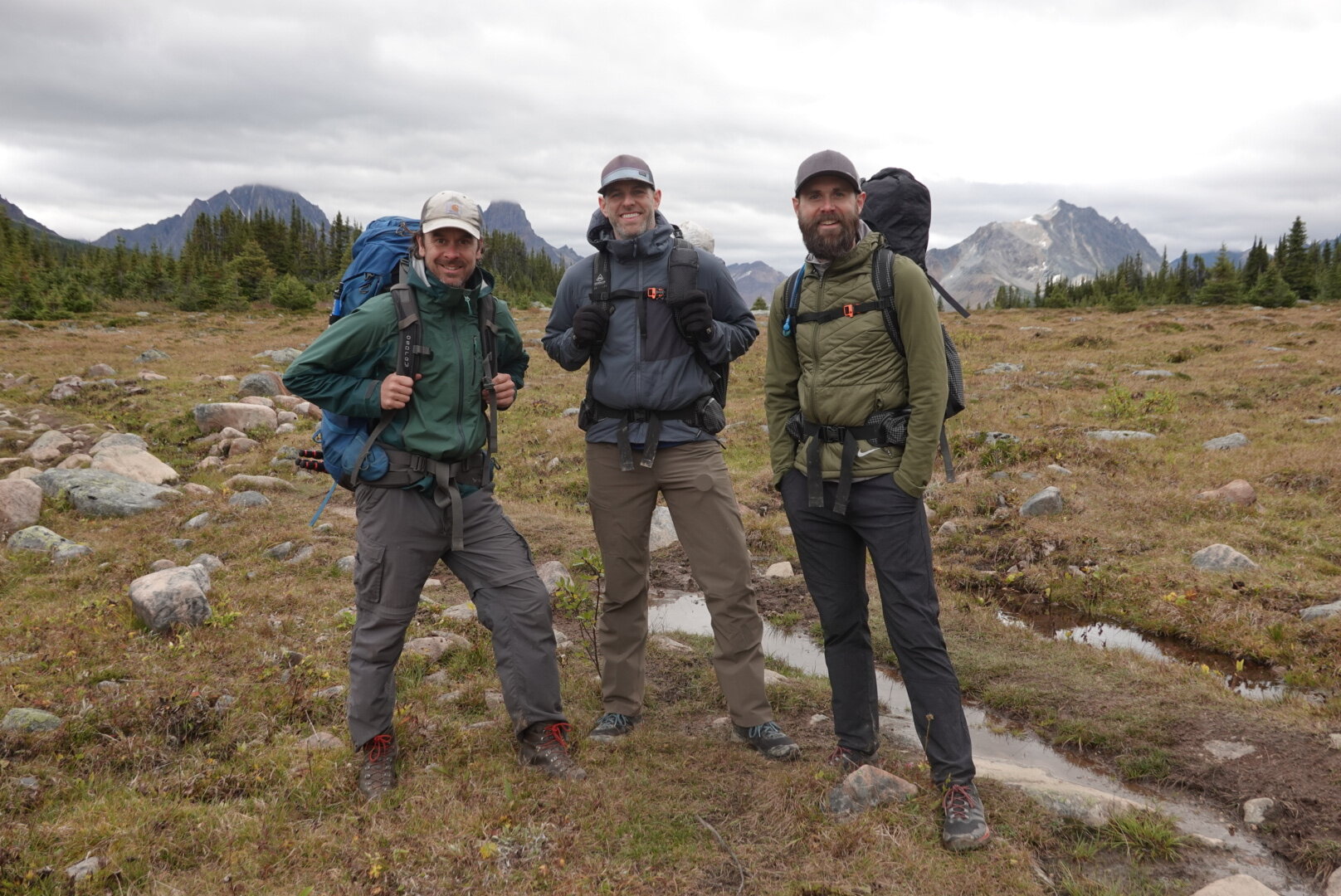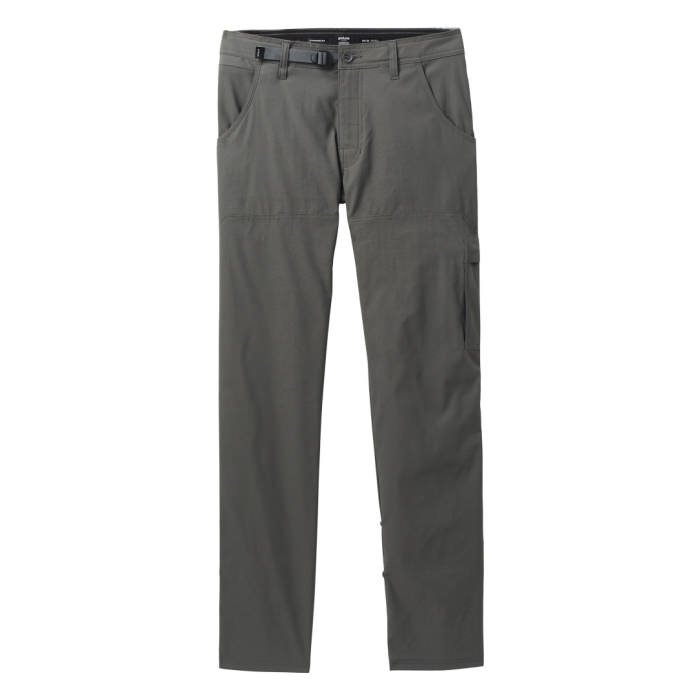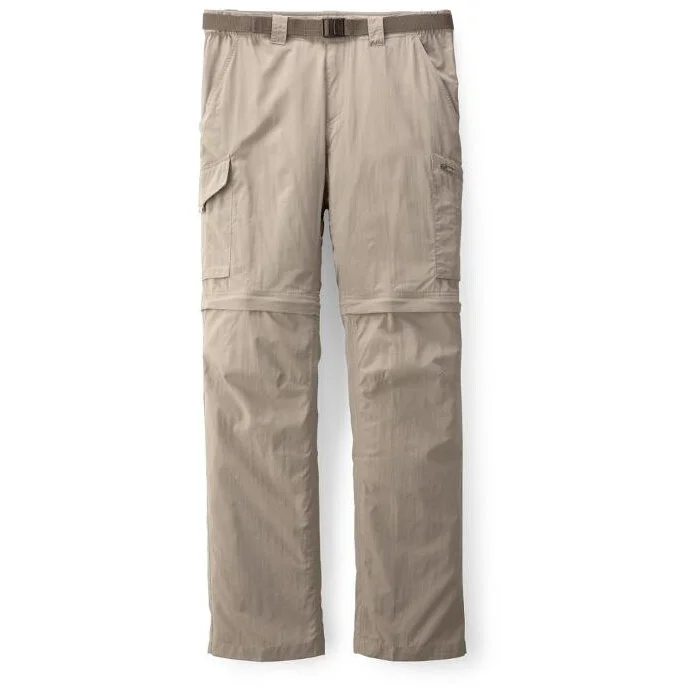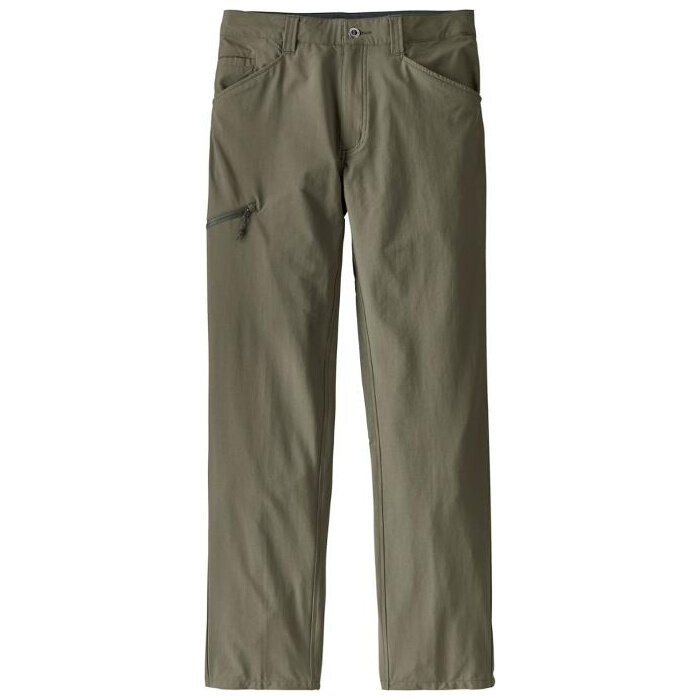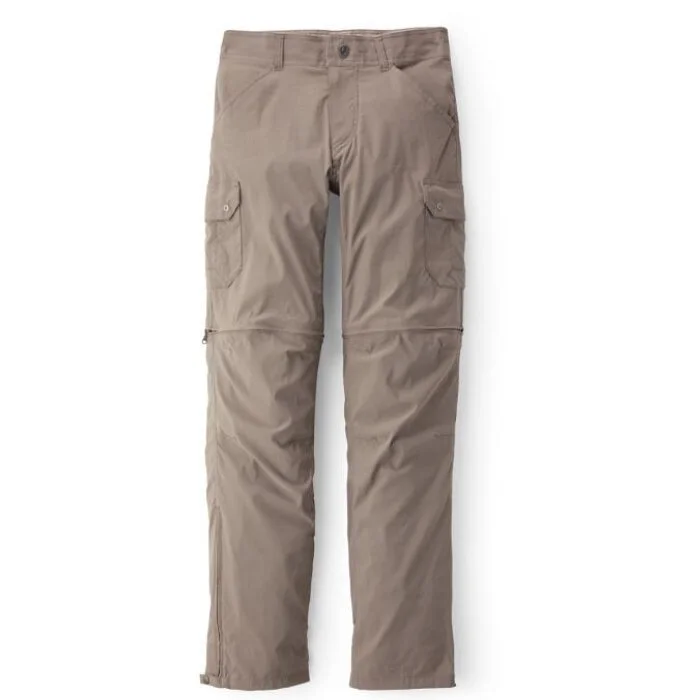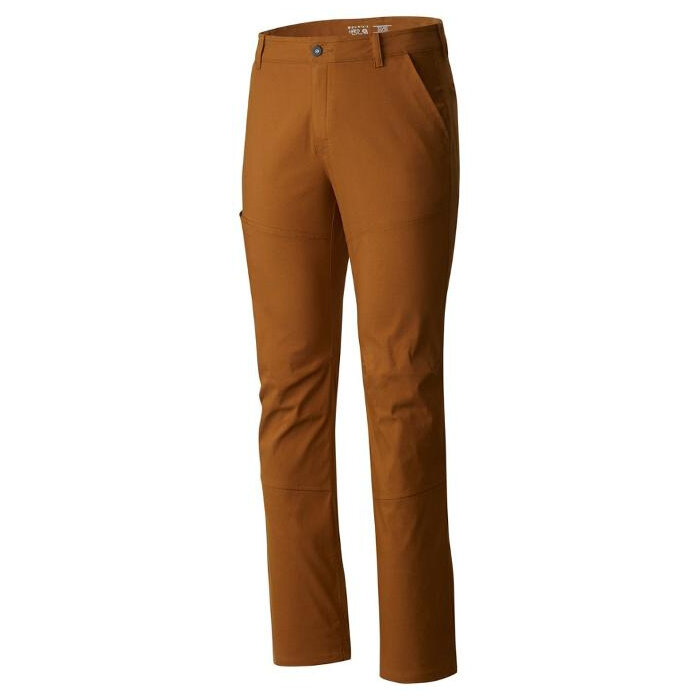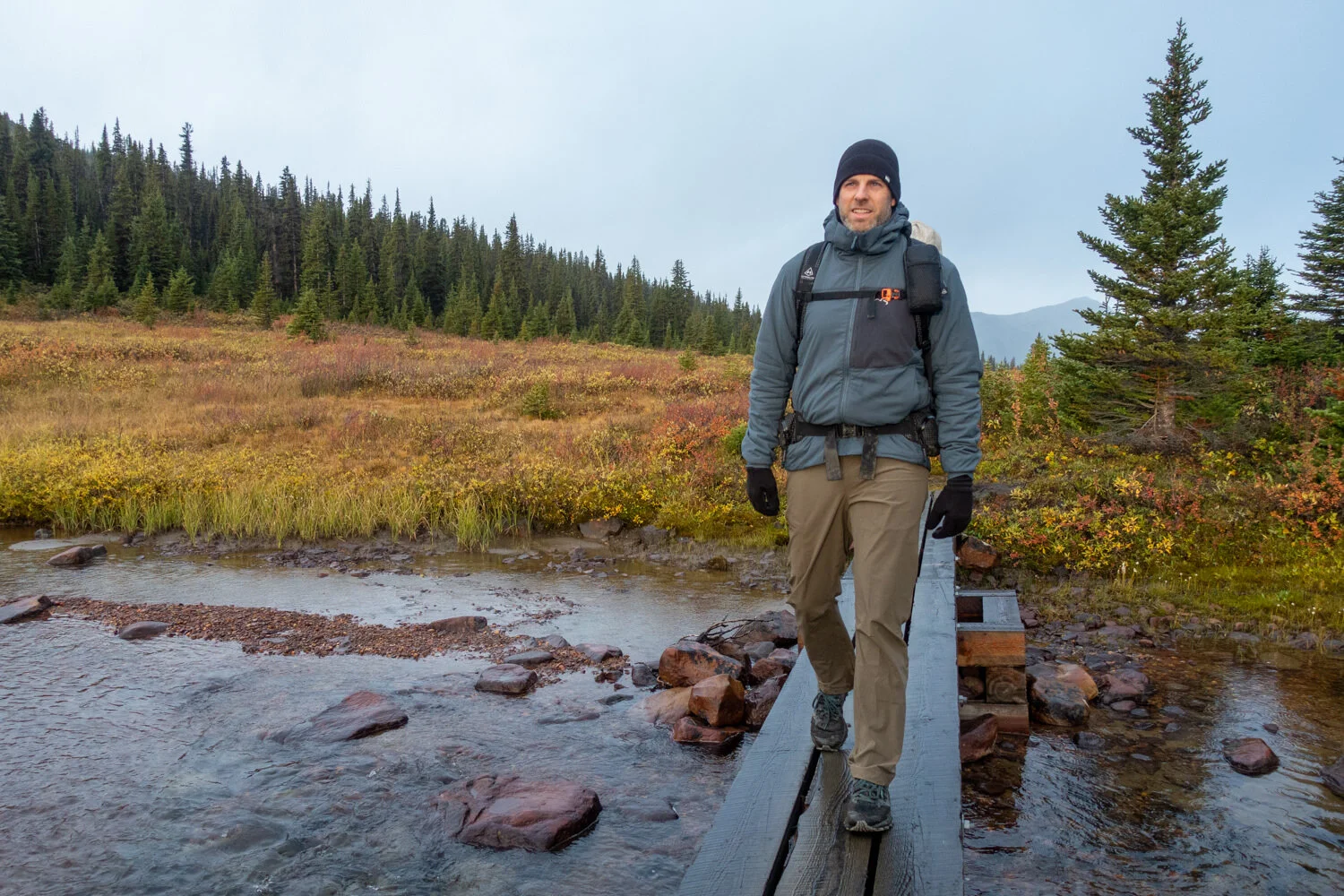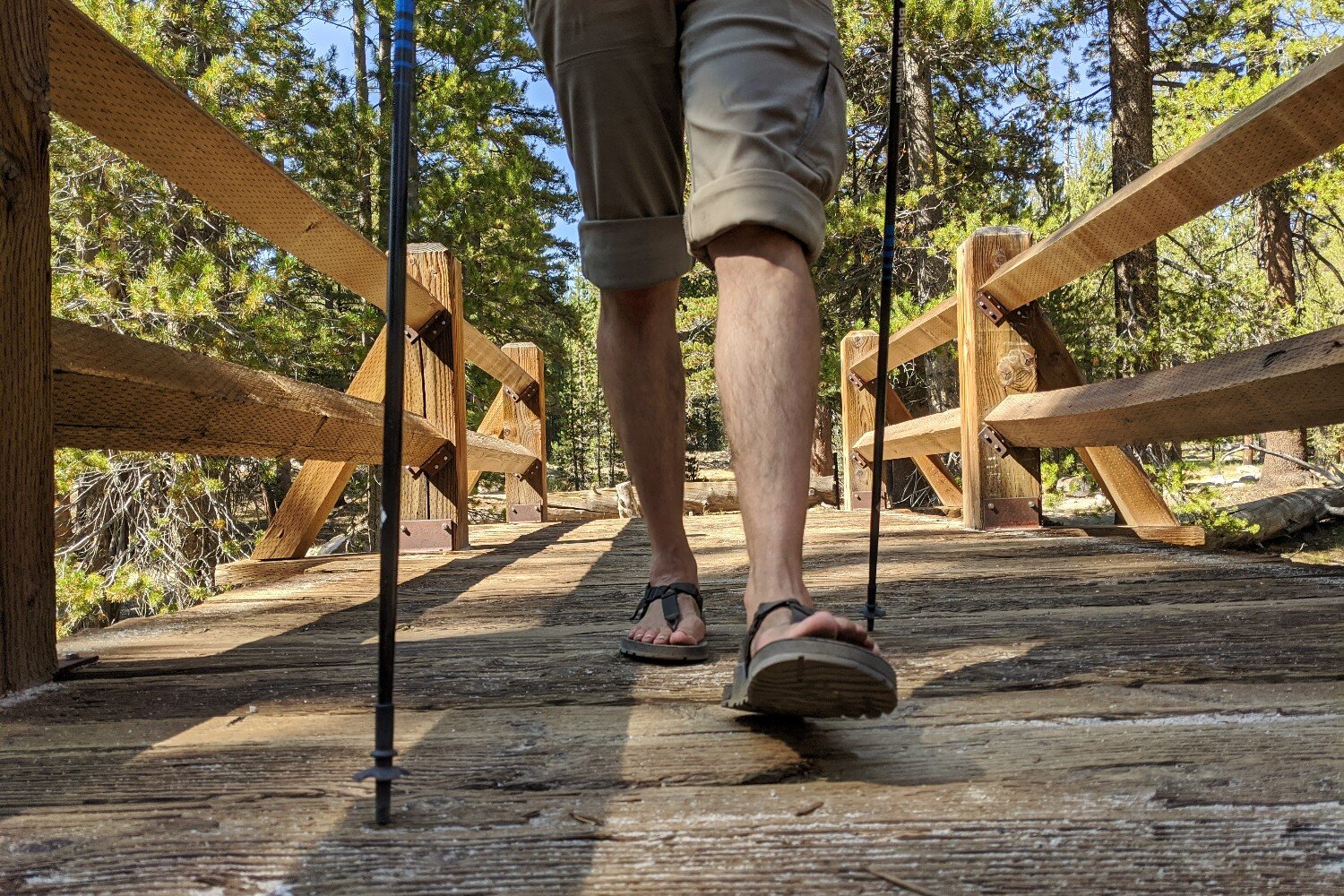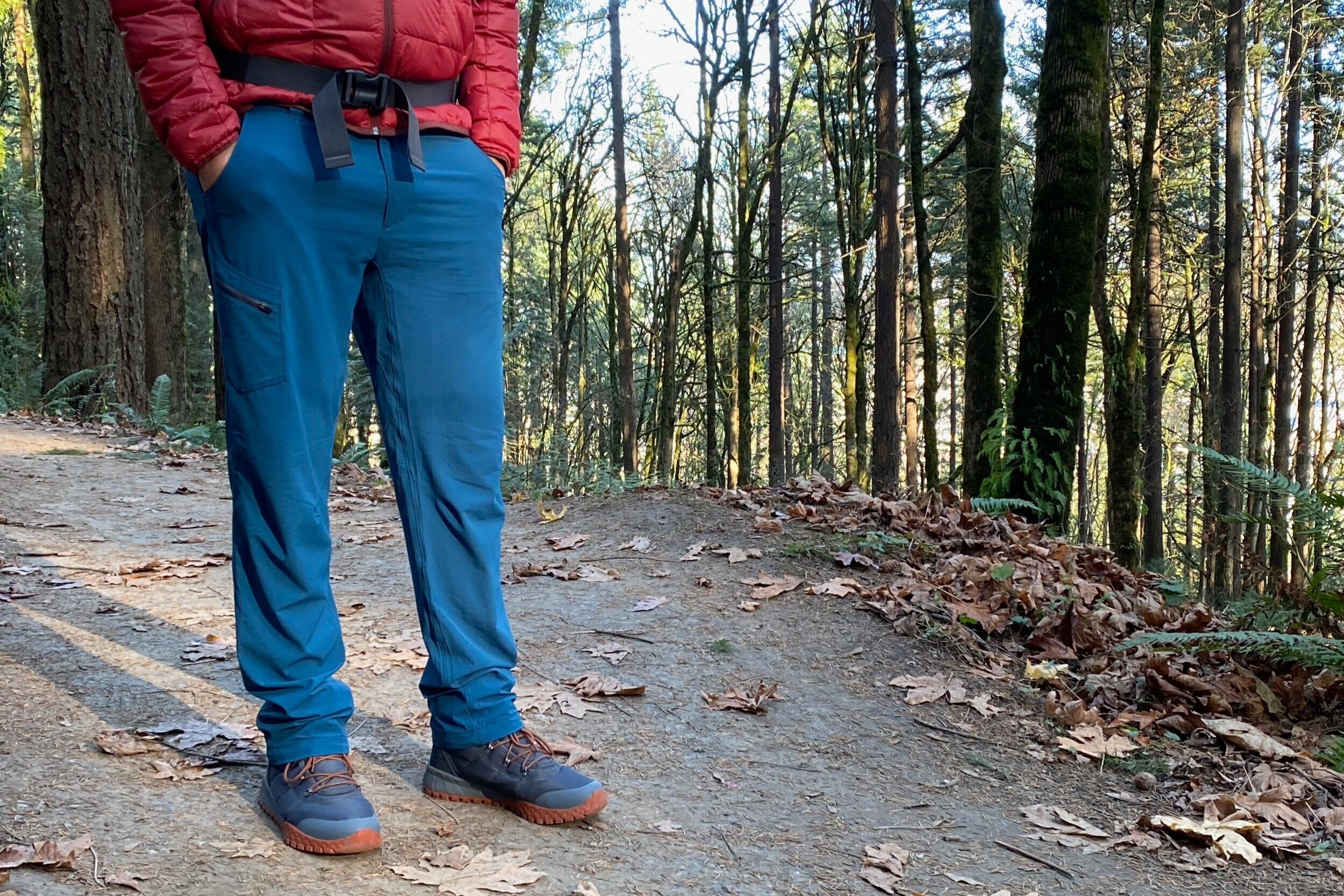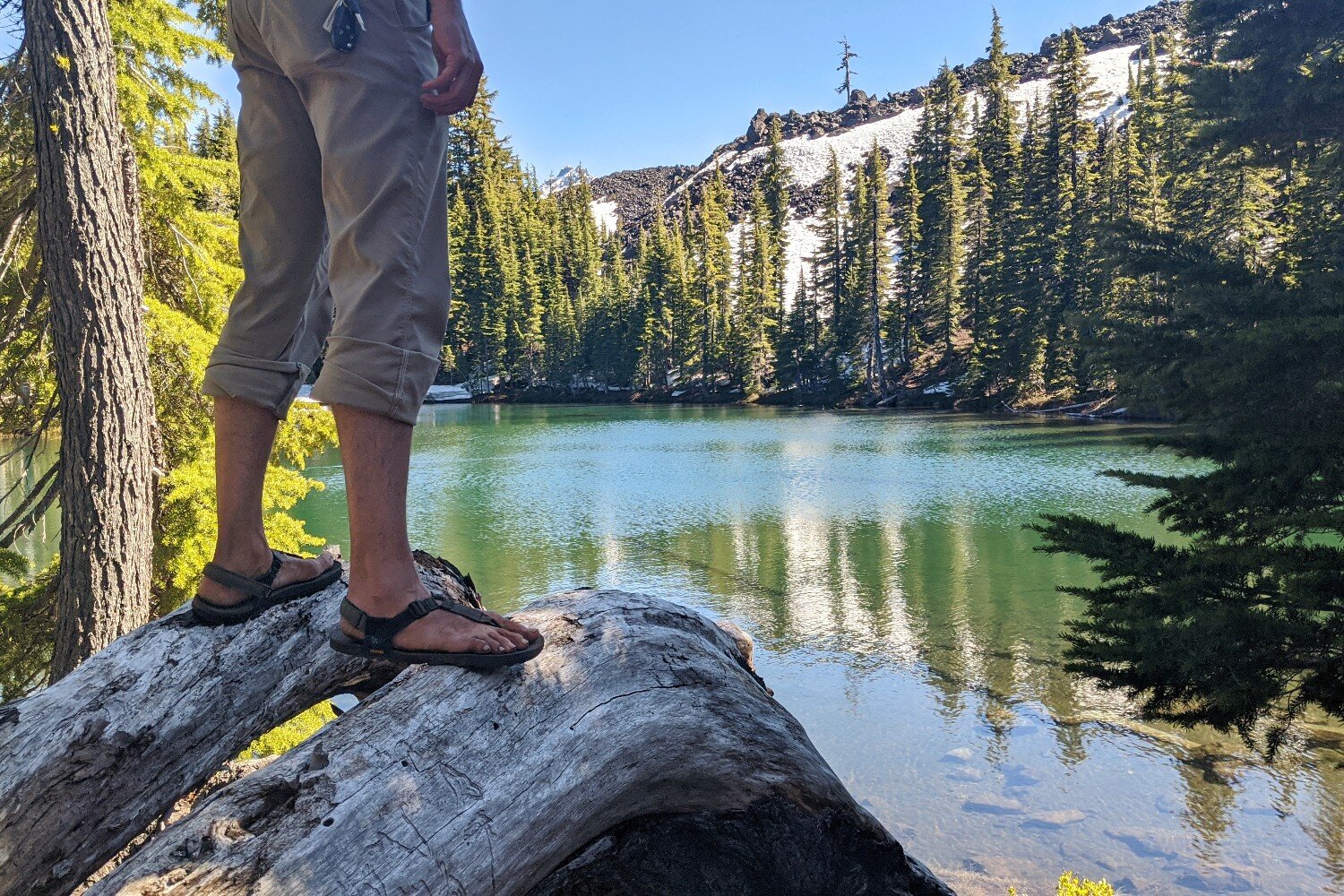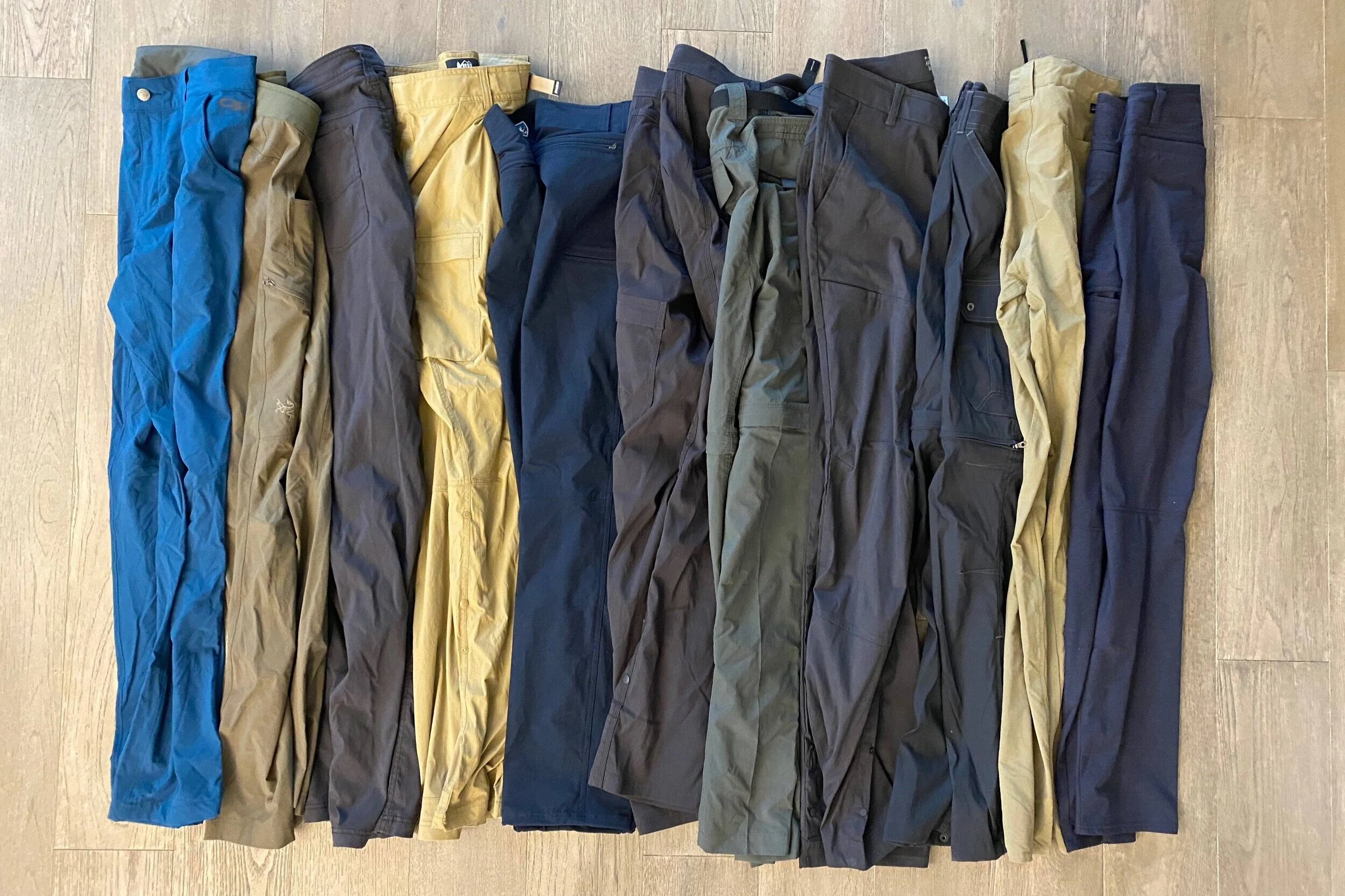Author: Casey Handley | Tester & Editor: Dave Collins
Last Updated: February 8, 2023
If you’re looking for a pair of the best hiking pants on the market you've come to the right place. Since 2012 our team of wilderness experts has tested over 30 pairs of hiking pants on trails all over the world.
Testing hiking gear is our full-time job and we take these guides very seriously, constantly watching the market for new innovations and updating this list regularly. Our hiking pants recommendations are fully independent and our number one goal is to help our readers find products they’ll love for many years of backcountry use.
We fully understand how tough it is to find trustworthy gear advice and that’s one of the main reasons we built CleverHiker. We live for outdoor adventure and we really hope you find our honest recommendations helpful.
Related: Best Hiking Pants for Women
We like the Kuhl Deceptrs because they perform well and look great both on and off the trail
Quick Recommendations
Check out this quick list of our favorites if you’re in a hurry, or continue scrolling to see our full list with in-depth reviews.
Best hiking pants overall for comfort, durability & style: Outdoor Research Ferrosi
Best quality hiking pants: Arc’teryx Gamma LT
Best budget hiking pants: REI Sahara Roll-up
Stretchy pants that work well for hiking & climbing: prAna Stretch Zion II
Stylish hiking pants that transition seamlessly from town to trail: Kuhl Deceptr
Durable hiking pants with a casual look: prAna Brion II
Affordable & breathable convertible hiking pants: Columbia Silver Ridge Convertible
Comfy, lightweight hiking pants with a simple pocket design: Patagonia Quandary
Durable convertible pants with a more appealing shorts mode than others: Kuhl Renegade Convertible
Versatile hiking pants with a stylish fit: Mountain Hardwear AP
The Kuhl Deceptr Pants are comfy and stretchy for the trail, and stylish for wearing around town
What’s Most Important to You in a Pair of Hiking Pants?
PRICE - We tend to be willing to spend a bit more on high-quality clothing that we plan to wear a lot. Comfort, durability, and a well-designed fit usually trump cost in our books, but we recommend quality options at a variety of price points in our top picks below.
Best value hiking pants: Outdoor Research Ferrosi, prAna Stretch Zion II & Kuhl Deceptr
Best budget hiking pants: REI Sahara Roll-up & Columbia Silver Ridge Convertible
Best high-end hiking pants: Arc’teryx Gamma LT & Kuhl Renegade Convertible
The Arc’teryx Pants tend to be very comfortable, streamlined, and high quality
WEIGHT - Keeping weight to a minimum is important for hiking and backpacking. We tend to go for lightweight clothing that packs down small for most of our 3-season trips, but a heavier pair of hiking pants is more ideal for rugged trips and cold weather.
Best lightweight hiking pants: Outdoor Research Ferrosi, Arc’teryx Gamma LT & REI Sahara Roll-up
Best heavy-duty hiking pants: prAna Stretch Zion II, Kuhl Renegade Convertible & Mountain Hardwear AP
Left to right; Columbia Silver Ridge, an older version of the Arc’teryx Gamma LT & Kuhl Deceptr
STYLE - It’s a good idea to try different types of hiking pants until you find what works best for your hiking style. Some folks like minimal pants that transition well from town to trail while others look for convertible pants pockets galore.
Best minimal hiking pants: Outdoor Research Ferrosi, Arc’teryx Gamma LT & Kuhl Deceptr
Best roll-up hiking pants: REI Sahara Roll-up & prAna Stretch Zion II
Best convertible hiking pants: Columbia Silver Ridge Convertible, Kuhl Renegade Convertible & REI Sahara Convertible
DURABILITY - Most hiking pants do a great job protecting you from scrapes and bugs, but you may want to opt for an extra-durable pair if you’ll be hiking in particularly rugged country.
Most durable hiking pants: Outdoor Research Ferrosi, prAna Stretch Zion II, Kuhl Renegade Convertible & Mountain Hardwear AP
The prAna Stretch Zion II Pants are durable enough for thru-hikes like the John Muir Trail in the Sierras
Best Hiking Pants of 2023
BEST HIKING PANTS OVERALL FOR COMFORT, DURABILITY & STYLE
MSRP: $99
WEIGHT: 10 oz. (size 34/34)
FIT: Straight-leg
FABRIC: 86% nylon, 14% Spandex
OTHER STYLES: Ferrosi Convertible Pants, Ferrosi Cargo, Ferrosi Crux (reinforced knees)
PROS: Super comfy, stretchy, lightweight, durable, simple pocket design, sleek look
CONS: No built-in belt
BOTTOM LINE: The Outdoor Research Ferrosi Pants are super stretchy so you can move easily on your adventures. They’re also very lightweight (the lightest we tested), which is a key benefit on backcountry trips where every ounce matters. The cinch cords at the ankles of the Ferrosis allow you to adapt the height of the pants to your style, the weather, and varying trail conditions. We find these pants to be very comfy and we love the simple pocket setup. For pants with so much stretch, we do wish Outdoor Research had included a built-in belt to help dial in the fit. But overall, these pants are an excellent choice.
BEST QUALITY HIKING PANTS
MSRP: $160
WEIGHT: 10.2 oz. (size 34/32)
FIT: Fitted
FABRIC: 86% nylon, 14% elastane
PROS: Lightweight, built-in belt, minimalist, comfy, stylish, durable
CONS: No back pockets, expensive
BOTTOM LINE: The Arc’teryx Gamma LT Pants are some of the lightest and most minimal pants we tested. We love that they have a built-in belt and a simplistic pocket design. We tend to like a simple pocket setup, but some people may not love the lack of back pockets on these pants. The latest iteration of the Gammas are slightly more fitted, but they will stretch and move with your body without getting in the way. The biggest drawback to these pants is the high price tag, but their excellent materials and superior craftsmanship justify the cost. So if you’re looking for a lightweight, comfortable, and very high-quality pair of hiking pants, these might just be the ones.
BEST BUDGET HIKING PANTS
MSRP: $60
WEIGHT: 10.2 oz.(size 34/34)
FIT: Baggy
FABRIC: 94% nylon, 6% elastane
OTHER STYLES: Sahara Convertible Pants
PROS: Built-in belt, affordable, lightweight, comfy, breathable, two roll-up height options
CONS: A little baggy for our taste
BOTTOM LINE: The REI Sahara Roll-up Pants feel light and breathable and we love that they included two different snaps for the roll-up height. The two snaps make it easy to adapt the length to your activity level and the weather. The fit in the leg is a little loose for our taste, but overall it’s a very comfortable fit that allows for easy movement and good ventilation. There’s a built-in belt included to help dial in the fit - we wish more pants manufacturers included this convenient feature. These pants also come in a popular convertible style if the roll-up feature doesn’t quite cut it for you.
STRETCHY PANTS THAT WORK WELL FOR HIKING & CLIMBING
MSRP: $95
WEIGHT: 14.2 oz. (size 32/34)
FIT: Relaxed
FABRIC: 95% nylon, 5% elastane
OTHER STYLES: Stretch Zion Slim
PROS: Good pockets, built-in belt, comfy, good stretch in the legs, durable
CONS: A little baggy for our taste, heavy
BOTTOM LINE: The prAna Stretch Zion II Pants have been a favorite among climbers and backpackers for years due to their stretchy comfort and durability. We love the built-in belt and we like that the pocket design is nice and simple too. We do wish these pants were a little lighter (they were among the heaviest we tested) and we aren’t huge fans of how loose the fit is in the leg (though they also come in a slim option). That said, these are a super solid choice if you’re needing a versatile pair of do-it-all pants and you like that classic hiking pant look.
STYLISH HIKING PANTS THAT TRANSITION SEAMLESSLY FROM TOWN TO TRAIL
MSRP: $99
WEIGHT: 11.9 oz. (size 34/34)
FIT: Slim fit
FABRIC: 75% nylon, 10% polyester 15% spandex
PROS: Stylish fit, minimalist, good pocket set up, light, comfy, stretchy
CONS: No built-in belt, expensive, snap button closure feels slightly less secure than a flat button
BOTTOM LINE: The Kuhl Deceptr Pants are some of the most minimalist pants we tested, and we love their sleek look. We like that the pocket design is useful without looking or feeling bulky - we often find that hiking pants have too many pockets for our liking and can look frumpy. The fabric on the Deceptr pants feels lightweight, stretchy, and very comfortable. Overall we think these pants perform very well and are versatile enough for traveling, hitting the trail after a day around town, or for backpacking.
DURABLE HIKING PANTS WITH A CASUAL LOOK
MSRP: $85
WEIGHT: 12.3 oz. (size 31/34)
FIT: Slimmer fit
FABRIC: 95% nylon, 5% elastane
PROS: Stretchy, comfy, stylish, simple, minimal pockets, durable
CONS: No built-in belt, no roll-up snap
BOTTOM LINE: The prAna Brion Pants II are a great option for those who prefer their hiking pants to have a more casual look that transitions easily from town to trail. We love the minimal look of these pants and we found them to be very comfy. Don’t let their looks fool you, though, we have used these pants for years and they have proven to be very durable and functional. We do wish prAna had included a built-in belt and snaps on the legs to hold rolled-up cuffs, similar to the Zion pants listed above. These pants are kind of just… well… pants, but they’re good at what they do.
AFFORDABLE & BREATHABLE CONVERTIBLE PANTS
MSRP: $65
WEIGHT: 11.9 oz. (size 34/34)
FIT: Relaxed
FABRIC: Ripstop nylon
PROS: Affordable, built-in belt, fabric feels light and breathable
CONS: Convertible zipper makes the shorts look a little strange, a little too tight on the quads, not stretchy
BOTTOM LINE: The Columbia Silver Ridge Convertible Pants are exceptionally breathable and we like how light the fabric feels. The integrated belt helps to dial in the fit at the waist, and we like that the fit in the legs is not as baggy as many other convertible pants we tested. That said, these pants were a little too tight in the quads which was restrictive when taking large steps up or rock scrambling. We wish these pants had some stretch to them to make movement a little easier.
COMFY, LIGHTWEIGHT HIKING PANTS WITH A SIMPLE POCKET DESIGN
MSRP: $89
WEIGHT: 10.9 oz. (size 34/34)
FIT: Relaxed/straight-leg
FABRIC: 94% nylon, 6% Spandex
PROS: Stylish cut, simple pocket design, comfy, lightweight
CONS: Fits a little tight in the quads, no roll-up snap, no built-in belt
BOTTOM LINE: The Patagonia Quandary Pants have a stylish look that transitions well from town to trail. We like the simple pocket design and the material has a decent amount of stretch to it. These pants breathe well and are lightweight, so they would be a good choice for a variety of weather conditions. Patagonia included a cinch cord with these pants, but we wish they had included a belt instead, which would have been more useful. We also found the fit of these pants to be a bit tight in the quads. Overall, the Quandary Pants are a great choice for day hikes that end with a trip to a brewery.
DURABLE CONVERTIBLE PANTS WITH A MORE APPEALING SHORTS MODE THAN OTHERS
MSRP: $109
WEIGHT: 15.9 oz. (size 34/32)
FIT: Relaxed
FABRIC: 95% nylon, 5% spandex
OTHER STYLES: Renegade Rock Pants (fitted)
PROS: Durable, good pocket set up, good conversion design, look good as shorts
CONS: Heavy, expensive, not breathable
BOTTOM LINE: The Kuhl Renegade Convertible Pants are well designed with a zipper that goes up the leg, making it easier to slip the zip-off sections over boots. We often find that convertible pants have a noticeable or uncomfortable seam at the zipper when in shorts mode, but these actually look and feel like normal shorts when converted. The Renegade pants feel really durable and would be a good option for off-trail adventures or rugged terrain, but they were far too heavy for our liking and they lacked breathability, making them a poor choice for warm weather hikes.
VERSATILE HIKING PANTS WITH A STYLISH FIT
MSRP: $90
WEIGHT: 15.1 oz. (size 34/34)
FIT: Slimmer fit
FABRIC: 75% cotton, 23% nylon, 2% elastane
PROS: Stylish fit, durable
CONS: Roll-up is ankle height, cotton, heavy, expensive
BOTTOM LINE: The Mountain Hardwear AP Pants have a nice fit and look very stylish, but they feel a little heavy for our liking. We often find that roll-up pants put the snaps that hold the cuffs up too low. The snaps on the AP pants put the cuff at ankle height, so you would likely need to roll past the snaps for water crossings or to get good ventilation. The heavier material - while not typically our favorite - feels pretty durable, and we think these would be a good option for cold-weather adventures.
PANTS VS. SHORTS
Pants - Hiking pants offer a lot more protection from the elements, bugs, and harmful plants than shorts. If you’re hiking in an area where the weather can change quickly or where the threat of pests such as ticks is increased, pants are probably the better choice.
Of course there are some downsides to pants - it’s harder to regulate your body temperature in pants, they’re heavier, and they may limit some movement when you need to do rock scrambles or climb over blow-downs. Convertible pants and roll-up pants give you more control over body temperature; we tend to prefer roll-ups because they typically have a more flattering fit and are lighter weight than convertible pants.
Shorts - Hiking in shorts is typically a lot more comfortable than hiking in pants, and shorts are the lighter weight option. We love to hike in shorts for most of our summer adventures when getting cold isn’t something we have to worry about. For colder months, shorts can be paired with a good set of base layer bottoms to keep you toasty.
That said, shorts will leave you open to things like scrapes from rocks and thorns, sunburn, and mosquitoes. Shorts typically don’t have as many useful pockets for storing things you might want to access quickly like your phone or map pages.
To see our favorite hiking shorts, click here!
On most summer backpacking trips, you’ll find the cleverhiker team hiking in shorts
CRITICAL Hiking Pants CONSIDERATIONS
FABRICS MATTER - The fabrics that work best for hiking pants are synthetics that are durable and don’t absorb moisture. Stretchy fabrics like spandex/elastane that allow for easy movement are important too.
Nylon - Nylon is an exceptionally durable synthetic fabric that dries quickly. It tends to feel slightly softer on the skin than other synthetic fabrics. Because of the way nylon is made, it tends to be a bit pricier.
Polyester - Polyester is very durable (although slightly less so than nylon), and naturally hydrophobic. Polyester absorbs less water than nylon and wicks moisture to the surface more effectively where it can evaporate and dry quicker. Polyester is also less prone to pilling - pilling doesn’t affect the performance of the fabric, but can be less aesthetically pleasing.
Cotton - Cotton is soft and comfortable against the skin, but it absorbs water. Cotton dries very slowly, can stick to the skin and cause chafing when wet, and can be potentially dangerous in cold/wet climates. We generally don’t recommend cotton for any extended hiking trips.
Spandex/elastane - Good hiking pants should have some spandex/elastane content for mobility. Most pants we tested have two-way stretch, which means they only stretch one direction (typically crosswise). These pants will stretch across your thighs and knees when you have to climb over blowdowns or do boulder scrambles. Some pants have four-way stretch which means the fabric stretches crosswise and lengthwise, these pants will be overall easier to move around in and will feel less inhibiting.
The prAna Brion II pants are made with stretchy fabric to give a full range of motion
FIT/ STYLE
Relaxed fit - Hiking pants with a relaxed fit are generally more comfortable for all day wear. The roomy fit makes them easier to move around in, and it can be easier to stay cool in pants with a little more wiggle room. The extra fabric can feel a little heavy and some people may not like the baggier look.
Slim fit/ straight leg - Hiking pants with a slimmer fit tend to be more lightweight than relaxed fit pants. Slim fit pants transition really well from town to trail, because they look more like everyday pants than hiking pants. Hiking pants with a slim fit need to have some stretch so that they don’t impede movement.
Articulated knees & gussets - Pants with articulated knees have special seams sewn in that make them easier to move around in. By comparison, when you hike with pants that don’t have articulated knees, you may feel the fabric pulling on you when you take a big step up. Similarly, gussets are an extra sewn in patch of fabric, usually at the crotch of the pants, that improves the fit and mobility.
Integrated belts - We tend to really love pants with integrated belts or internal drawcords at the waist. The ability to dial in the fit is really helpful for those who are in-between sizes. We also find that integrated belts are useful for longer where weight tends to fluctuate a little.
CONVERTIBLES VS. ROLL-UPS
Convertibles - We like convertible pants for the obvious reason - they are pants and shorts. The ability to switch between the two with one article of clothing can save weight and pack space, since you don’t have to pack multiple bottoms. That said, convertible pants tend to have a very relaxed fit that can feel a little too baggy for us. If you wear your convertibles in shorts mode more often than pants mode, you will likely notice a stark difference in color between the shorts and the pant legs as well.
Roll-ups - We generally prefer roll-up pants over convertibles. Roll-ups tend to have a more flattering fit, and transition easily from town to trail. You can quickly change the length of roll-ups without having to worry about separate pieces like convertible pant legs and without having to deal with awkward color differences between the top and bottom over time. The one big drawback is that roll-up pants with thicker fabric can be uncomfortable when rolled.
We like roll-up pants, like the prAna Stretch Zion II, because they make it quick and easy to regulate body temperature
POCKETS
We tend not to use most of the pockets on hiking pants because items stored in them can feel bothersome and can impede movement. We generally prefer pants with fewer pockets because they look more sleek and feel more comfortable.
Back pockets - We almost never use back pockets because they’re hard to access with a backpack on and things stored there get in the way when we want to sit down.
Front pockets - Front pockets can be useful around camp and in town, but we rarely use front pockets on the trail because it’s hard to access them with a hip belt on. Also, when items are stored in front pockets, lifting your leg over logs and boulder scrambling can be uncomfortable.
Side pockets - We think the most useful pocket on a pair of hiking pants is one that sits on the side of your thigh and is large enough to accommodate a smartphone. We may store a map and sometimes our phone in this pocket for quick access. That said, when possible we like to leave these pockets empty as well (and use our hip belt pockets instead) for freedom of movement.
The Outdoor Research Ferrosi Pants have a simple pocket configuration that works well for hiking
TECHNICAL FABRIC CARE
PRETREATED FABRICS/ MAINTENANCE - Some technical clothing comes pretreated with water or bug repellent. These pretreatments aren’t permanent and they cost extra money. You can easily maintain a pretreatment or add your own water or bug repellent to your pants with these products:
Water - To maintain or add water resistance to hiking pants we recommend using Nikwax TX.Direct Wash-In Water Repellent Treatment. This treatment will maintain breathability while effectively causing water to bead and roll off the fabric. Keep in mind that this won’t make your pants completely waterproof, as most pants don’t have sealed seams and are constructed with fabrics that will absorb a small amount of water.
Bugs - To maintain or add bug repellant to your clothing we recommend Sawyer Permethrin Pump Spray. This treatment will repel and kill ticks, mosquitoes, mites, and chiggers. It lasts about 6 weeks or 6 washings before you need to reapply it.
Tears/ holes - To patch holes and tears, we recommend using the Noso Patchdazzle Gear Repair Kit. These patches don’t require any sewing or ironing, can withstand repeated machine washes, and are UV protective and waterproof.
The patagonia Quandary pants are very durable, which makes them awesome for rugged trails like the rockwall trail in Kootenay Park in alberta
GENERAL CARE - Technical fabrics do require some special care to keep them performing their best for years. You should always follow the washing directions on the tags carefully, but here are some general tips to follow:
Use a front loading washer - The agitator in a top loading washer can be hard on seams and can snag zippers or drawstrings. Make sure you zip all the zippers and tie the drawstrings before washing to prevent wear and tear.
Use a technical fabric wash - We recommend Nikwax Tech Wash for washing any technical fabrics.
Only wash when you really need to - A lot of technical fabrics are designed to be antimicrobial and shouldn’t hold odors. Hiking clothing doesn’t necessarily need to be washed after every trip.
Don’t use fabric softener or dryer sheets - Fabric softener and dryer sheets can deposit residue on the fabric and affect the overall performance.
Hang dry when possible - Heat and agitation in the dryer can damage technical fabrics.
Roll-up style hiking pants, like the prAna Stretch Zion II, provide a good balance between protection and temperature regulation
need more Gear advice?
If you liked this list, you’ll love the CleverHiker Gear Guide where we test and recommend tons of outdoor adventure gear from a variety of categories. here are some links to popular articles:
We own and use all the hiking pants we recommend
Why Trust Us?
We fully understand how tough it is to find trustworthy gear advice, and that’s one of the main reasons we built CleverHiker. We live for outdoor adventure, and we take these guides very seriously. Here are some of the reasons you can trust us:
Our choices are completely independent and based on personal experience.
We’ve logged over 10,000 trail miles and test outdoor gear for a living.
We own and field test every product we recommend, which is sadly not the norm.
We travel to industry trade shows to learn about upcoming product innovations.
We constantly update our guides when new products launch.
We treat our recommendations as if they were for our family and friends.
We’re lifelong learners and we’re always open to constructive criticism. If you think we’ve missed a product or got something wrong, we’d love to hear your feedback.
More Information
We hope this guide helps you find the perfect gear for your needs. If you have more questions or a suggestion, we’d love to hear from you! Sign up for our newsletter to stay updated on our latest posts then visit our Facebook page and Instagram to join the community conversation.
If you found this guide helpful, please share on social media and click the little heart button below to give us a digital high five! Also, be sure to check out our CleverHiker Gear Guide to see all of our top gear picks.
Thanks for reading and happy trails!
Some of the links on this page are affiliate links, which means we may receive a modest commission if purchases are made through those links. This adds no cost to our readers and helps us keep our site up and running. Our reputation is our most important asset, which is why we only provide completely honest and unbiased recommendations.

